BandLab: Can the Creation Platform Experiment Become More Social?
How BandLab is aiming to make music creation, collaboration, and community easier.
GM readers 👋,
Happy April!
In November 2022, Chat-GPT, OpenAI’s AI-powered chatbot, was released publicly and blew pretty much everyone away. Around that time I wrote about how it was giving me early iPhone vibes in terms of its potential impact. Now, roughly five months later, the use cases for this technology are beginning to impact the music space. The biggest industry news this past month has arguably been AI-related. First, Universal Music Group (“UMG”) started lobbying for streaming services to block AI companies from scraping their copyrighted songs’ data to train AI systems. Second, an AI generated song trained on Drake and the Weeknd’s vocals went viral, generating 650K+ streams on Spotify and 250K+ views on Youtube. Shortly thereafter, the song was taken down from pretty much all platforms after UMG filed a copyright claim.
Like many of you, I’m still getting up to speed on generative AI. The space is moving extremely fast. Regardless, I aim to analyze how AI is being adopted (or rejected) in the music industry and its potential implications in a future newsletter . In the meantime, the always insightful Ben Thompson recently wrote a great piece about this topic. It’s worth checking out!
At Alderbrook, we’re working on a number of exciting projects in music and gaming. Please reach out if you think that we might be able to help you and your firm! Meanwhile, Hannah and I welcomed a rescue puppy named “Indy” to the family this month. He’s cute and peeing everywhere. Wish us luck! 🐶
In this month’s newsletter, we’re going to look at BandLab, a company that is arming anyone owning a mobile device with the tools necessary to easily create and distribute music. BandLab reportedly has more creators on its platform than Spotify, Roblox, Patreon, and Unity combined. With individuals creating music at a staggering rate using BandLab, the music creation platform makes for an interesting case study of what happens when user generated content (“UGC”) finds product market fit in the music industry.
As a reminder, these company-specific articles are intended to “level up” my understanding. Importantly, I’m not trying to shill any investments. This isn’t a sponsored piece and BandLab isn’t paying me to write it.
And with that, on to the disclaimers…
Note: I write this newsletter to learn in public. This piece is for informational purposes only. None of this is financial or legal advice. Do your own research!
Thanks again for reading. If you have any feedback or ideas for future posts, please leave a comment or shoot me an email.
Now, let’s get after it!
Jimmy
PS If you like our work, please consider hitting the heart ❤️ emoji and sharing this article, because it helps more readers discover our writing and supports our growth! And if you’re not already a subscriber to Leveling Up and don’t want to miss out on future newsletters, feel free to enter your email below and you’ll receive new posts directly in your inbox.
BandLab: Can the Creation Platform Experiment Become More Social?
“[The internet] has fundamentally changed the plane of competition…this means that the most important factor determining success is the user experience: the best [platforms] win by providing the best experience, which earns them the most consumers/users, which attracts the most suppliers, which enhances the user experience in a virtuous cycle.” - Ben Thompson of Stratechery explaining Aggregation Theory
The independent artist sector is the fastest growing segment of the recorded music business. This is due in large part to the internet and smartphones forever changing how music is distributed. Artists are now easily able to upload their songs onto music streaming platforms, like Spotify and Apple Music, or share their works on social video platforms, like TikTok and YouTube. Today’s artists don’t have to worry about legacy supply chain issues and costs, such as manufacturing CDs and cassettes and developing relationships with physical retailers, in order to reach fans.
As a result, artists don’t have to be signed to a label to reach a global audience. This paradigm shift has contributed to a growing share of recorded music revenue flowing to independent artists. MIDiA estimates that the “Artist Direct” revenue segment reached ~$1.8 billion in 2022, which was nearly 4x its 2017 size. Despite this tremendous growth, Artist Direct revenue is still less than 6% of total industry revenue, suggesting that it has ample growth potential in the future.
Yet operating at a global scale is still incredibly challenging for any artist, even for those who sign to a major record label. As a result, a “creator tools” ecosystem has emerged, consisting of companies unbundling the offerings of traditional labels to enable more independent artists to build and grow their careers.
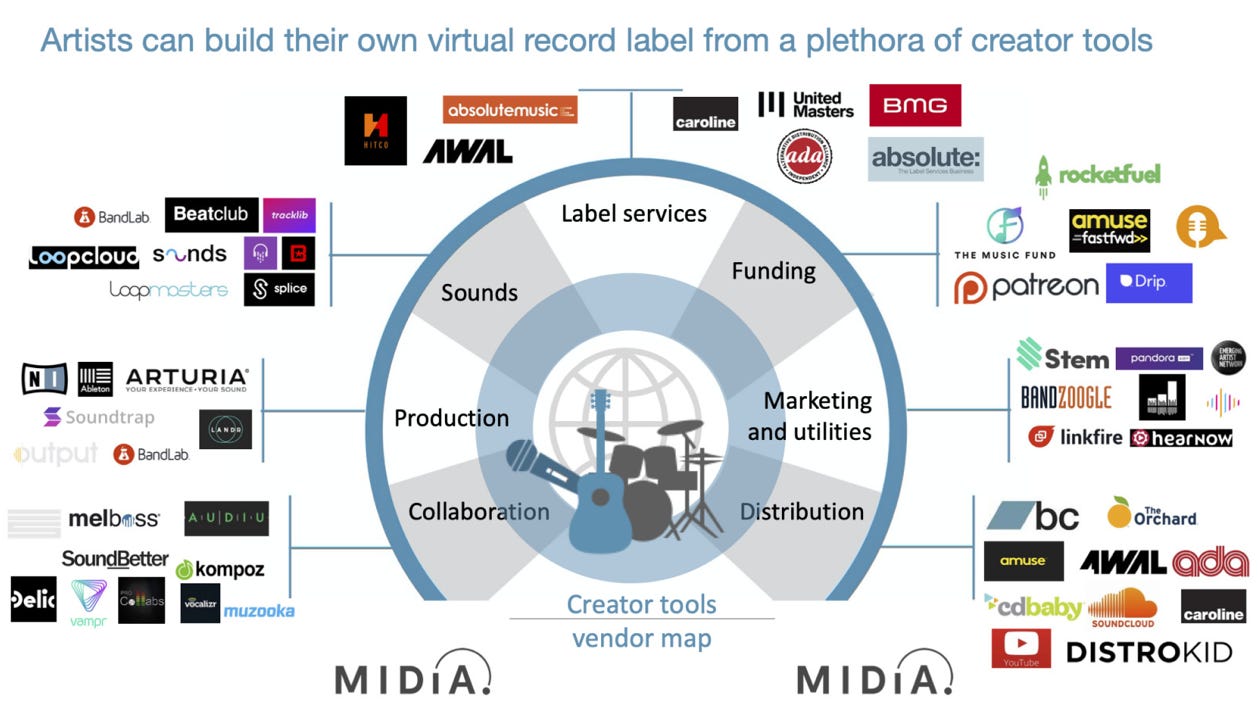
Among the growing number of creator tool companies, Singapore-based BandLab’s recent performance milestones caught my attention. The company announced that its registered user base had grown to 60+ million and that these users were creating 16+ million new songs each month. For context, Spotify has said that there are 11+ million creators on its platform and ~3+ million new songs are uploaded to its platform each month. While a meaningful number of BandLab users likely don’t have professional aspirations or distribute their songs via streaming services, these are still some heady figures.
It’s worth diving into the company because of the potential it has as a key platform that enables millions of independent music artists to create music, collaborate with their peers & fans, and (for those that want them) access marketing & distribution tools to grow their careers. Platform-based publishers are non-existent in the music industry, whereas they are some of the most dominant players in other sectors, like video gaming. Could BandLab eventually play a role in introducing this business model to music?
What is BandLab?
BandLab was started in 2015 by Steve Skillings, a developer and former founder of the JamHub Audio Mixer, and Kuok Meng Ru, the 34-year old son of Malaysian palm oil billionaire Kuok Khoon Hong. Prior to founding BandLab, Meng Ru purchased and ran Swee Lee, a 65+ year old music instrument retailer with locations throughout Southeast Asia. Meng Ru acquired Swee Lee at 23 years of age, seeing an opportunity to update its business model by adding an ecommerce platform. “Thinking back, it was crazy. I was so young and foolishly confident in believing we’d be able to turn it into what it is today.” Ten years after the acquisition, Swee Lee now claims to be Asia’s largest music retailer.
Today both Swee Lee and the BandLab platform is a part of Caldecott Music Group (“CMG”), a holding company run by Meng Ru. CMG’s various portfolio companies are held in three distinct groups:
1) BandLab Technologies: a technology company that designs and develops tools and services for independent music creators. It owns the BandLab app, beat marketplace Airbit, the Digital Audio Workstation Cakewalk, and DIY artist networking & services website ReverbNation.
2) NME Networks: a media group that focuses on music. It owns Guitar.com, NME, and other music focused media businesses.
3) Vista Musical Instruments: a group of musical instrument and equipment brands. Its brands include Heritage Guitar Inc., Harmony, and others.
In interviews, Meng Ru has described how the idea for BandLab came about: “From the start, it was pretty apparent that this was something very exciting. And it wasn’t just the possibility of how technology had developed to allow musicians to have tools in the cloud to work with each other. But what was particularly exciting was the opportunity to engage creators and their fans in the same space.” BandLab has focused on building a product that makes it easy for anyone to create a song for free, collaborate with other artists & fans, and then share their creations with a global audience. In short, it’s both a tool to create and develop songs and a social platform through which creators and music lovers can interact.
On the music creation side, BandLab’s mobile app and website provide creators with a free and user-friendly Digital Audio Workstation (“DAW”) to produce new songs. Of course, there are other free DAWs on the market, such as Apple’s GarageBand. What makes BandLab unique is that music making can be done across a variety of devices – it works on Android, iOS, Macs, or PCs – whereas GarageBand is available on Apple products only. BandLab also stores data in the cloud, enabling users to collaborate remotely on their music projects. For this reason, Meng Ru often describes BandLab as Google Docs to Microsoft Word or Google Sheets to Microsoft Excel.
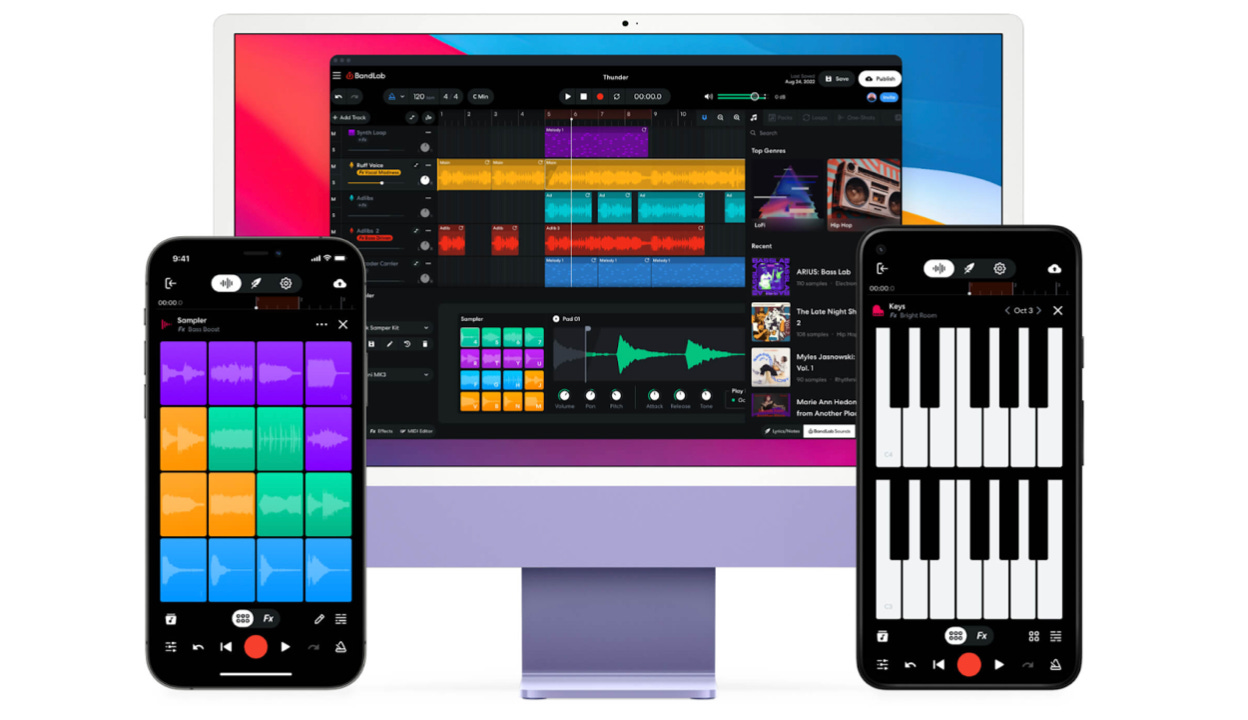
On the social network side, BandLab’s platform feels like a cross between Twitter and SoundCloud. For example, there is a homepage feed where artists upload songs and messages. Fans can then comment and like these posts. BandLab artists have profile pages (depicted below) that fans can “follow” and send direct messages, with a UX that reminds me of Twitter’s profile pages. Meanwhile, BandLab’s discovery page has featured artists, songs, playlists, etc. for fans to discover new music with a UX that looks similar to a music streaming service.
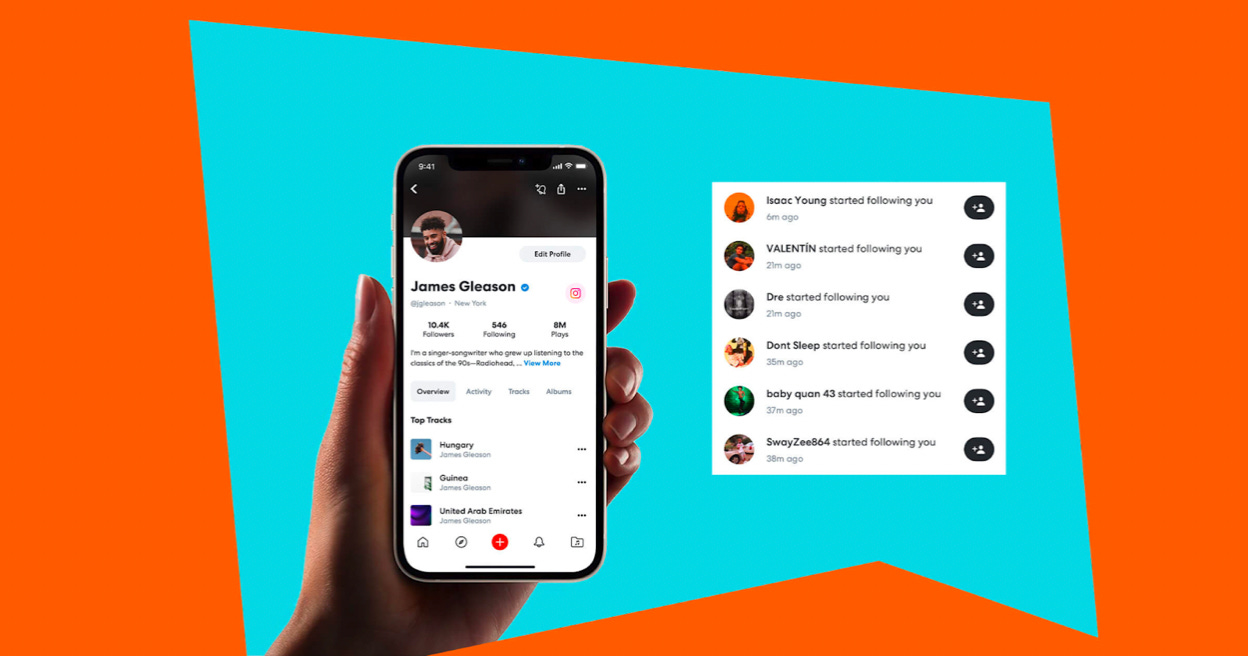
Over time, BandLab has added a number of other tools & services to make the music creation process easier, to enable artists to earn more income from their music, and to enhance the social experience within the platform. Some of these include:
BandLab Sounds: unlimited access to a curated collection of thousands of royalty-free loops and samples created by professional musicians from around the world.
BandLab SongStarter: a free AI-powered royalty-free song generator that acts as a starting point to create new music.
BandLab Opportunities: a service that via BandLab’s acquisition of ReverbNation gives artists the chance to apply for music industry opportunities (e.g., festival performances, brand licensing partnerships, blog interviews, label signing, etc.) to advance their career and grow their audience.
BandLab Distribution: a tool that allows users to start releasing the music created on and off BandLab to the major music streaming platforms like Spotify, Apple Music, Amazon Music, and more without giving up any royalties or copyright control.
BandLab Crowd Review: a service that, via ReverbNation, gives artists the opportunity to submit song(s) for review and then receive a detailed report of commentary, ratings, and constructive feedback from a targeted group of listeners.
BandLab does not charge any upfront fee to access its main features. This is partly due to the company’s mission to engage the world’s underserved music creators. This is also likely a strategic move that removes one potential adoption barrier to adding users.
To generate revenue, BandLab focuses on providing “artist services.” It offers its “power users” – those most focused on building a career in music – the ability to spend on services that will promote and develop their career. For example, it offers the option to purchase a monthly subscription (depicted below) with various features and benefits, such as “Profile Boost,” which features artists profiles prominently in the social network part of the app. In many ways, this reminds me of how free-to-play video games approach monetization. The free-to-play games industry, which was valued at ~$90 billion in 2018, allows users to access a game for free and then charges “whales” for microtransactions and subscriptions in exchange for items that enable faster game progression and/or convey status.
In summary, BandLab has developed a platform where users can create, collaborate, and share music for free. The company continues to add new features in an effort to provide independent artists with the tools and opportunities necessary to build a music career. Along these lines, BandLab’s social network interface provides artists with a place to be discovered, engage with, and be supported by their fans.
How’s it going so far?
With this context in mind, let’s take a closer look at how some of the key aspects of the business are performing so far. BandLab is a private company, so we have access to a limited amount of data. Nevertheless, there are some key indicators we can look at.
Registered users
As discussed, BandLab has grown its registered users on the platform from 18 million in October 2020 to 60 million in January 2023. That’s an impressive ~70% compound annual growth rate over the past ~2+ years. Based on these data points, more and more people appear to be creating new music using BandLab.
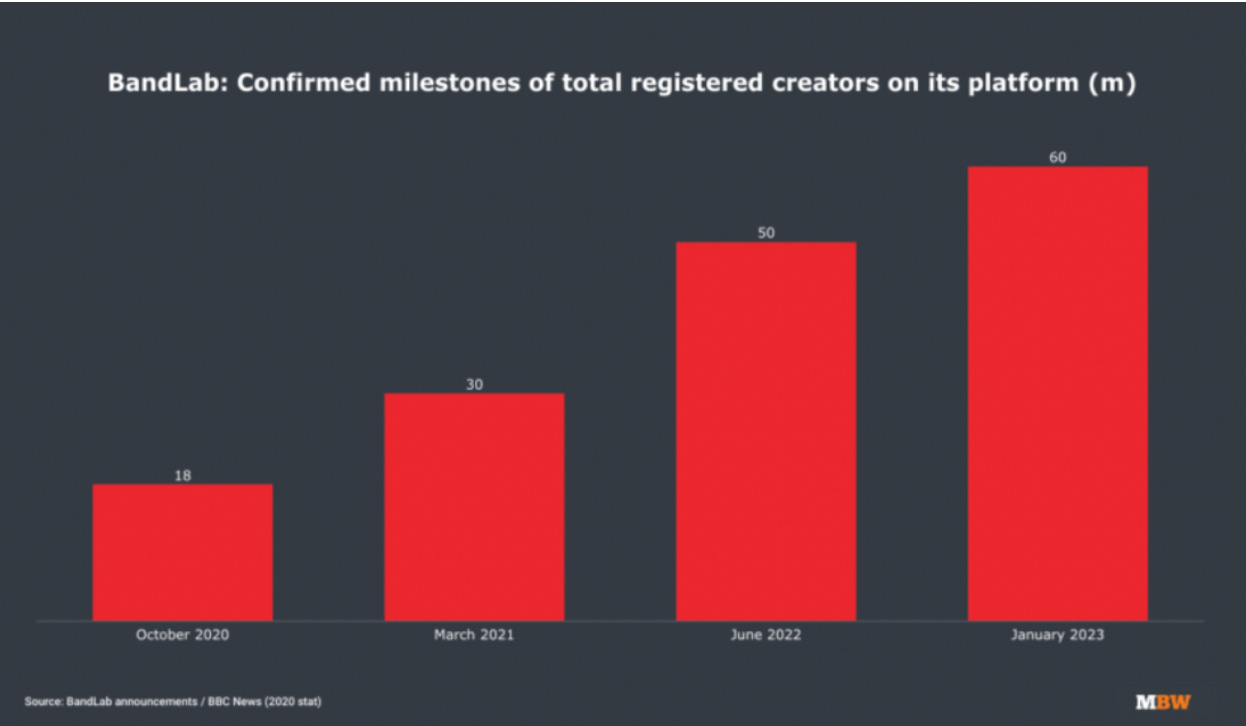
Google Search & App Download Trends
BandLab’s Google search trends align with its registered user growth trajectory. The chart below illustrates how much interest worldwide searches of “BandLab” have garnered over the past 5 years relative to competitors GarageBand and Soundtrap (acquired by Spotify). After lagging GarageBand searches for some time, BandLab saw a real spike in search volume during the pandemic and is currently receiving slightly higher global search interest compared to GarageBand.
BandLab’s largest market is currently the US, but over the past year, BandLab searches have outperformed GarageBand and Soundtrap in lower GDP per capita regions (where iPhones are less prevalent), such as South America, Africa, and Southeast Asia. GarageBand has continued to outperform searches – albeit just slightly – in many countries, like the US and Canada, where iPhone devices have a higher market share. Meanwhile, Soundtrap, which is headquartered in Sweden, really only seems to dominate search trends in its home country and Norway.
Finally, SensorTower data in the US (BandLab’s biggest market) shows that the BandLab iPhone app has been downloaded more than GarageBand over the past 90 days.
The search and download data illustrates that BandLab has seen a growing amount of interest from consumers over time, especially relative to competitors. The regional search data suggests that there may be a relative blue ocean for BandLab to serve in emerging markets, even if the near-term revenue opportunity is smaller than that in North America and Europe.
Success Stories
BandLab hasn’t produced a superstar artist yet, but there are a handful of viral songs that were created on the platform. Arguably the most successful outcome to date is d4vd’s hit “Romantic Homicide”, which reached number 33 on US Billboard’s Hot 100 charts in 2022. The song has over 46 million Youtube views, over 440 million Spotify streams, and has been used in over 350k TikTok videos. Subsequent to the song’s success, d4vd signed a deal with Interscope Records.
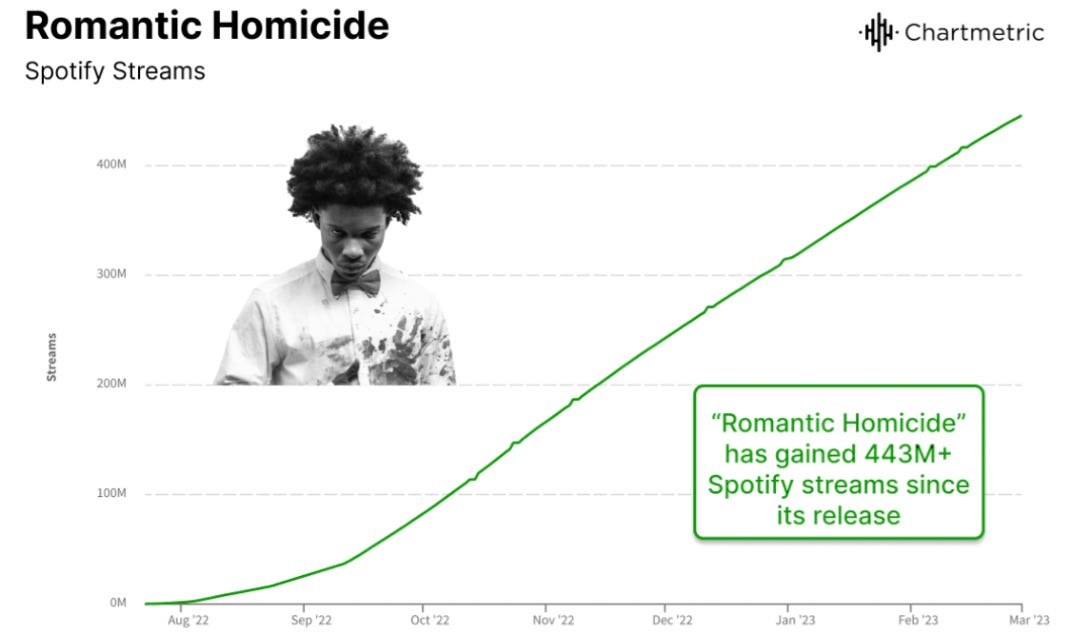
While BandLab-created songs, like “Romantic Homicide”, have blown up on other social platforms, it’s worth noting that plays and follower counts for these successful artists on BandLab are somewhat underwhelming for a platform with tens of millions of registered users.
When I search for d4vd on the BandLab mobile app, I only see ~8k followers and ~19k plays. Meanwhile, Cl4pers, another successful BandLab artist, only has ~5k followers and ~43k plays. In short, it appears that content creators can certainly develop viral songs using BandLab’s free music creation tools, but BandLab has work ahead to attract and retain content consumers (i.e., fans) within its ecosystem.
Fundraising Milestones
As discussed, BandLab is backed by an extremely wealthy family. Still, the company has been able to raise a meaningful amount of capital from reputable outside investors, which is a good sign. In April 2022, BandLab announced it had raised a $65 million Series B at a $315 million valuation from Vulcan Capital (late Microsoft co-founder Paul Allen’s VC firm), Prosus (backers of DeliveryHero and SimilarWeb), K3 Ventures (backers of Grab and Bytedance), and Meng Ru’s Caldecott Music Group. Given the timing of the previous raise and BandLab’s approach of limited monetization at this time, it’s likely that BandLab will announce a new fundraising round in the next 6 to 12 months.
Hiring Trends
According to Linkedin, BandLab Technologies (the operator of the BandLab app) has grown its employee base significantly over the past couple years. Over the past two years, the company’s headcount has grown 71% to 200+ employees. Between BandLab’s recent fundraise and acquisitions (Airbit, ReverbNation), its headcount growth isn’t surprising.
All in all, these trends are supportive of BandLab’s positive momentum. It’s adding creators, growing in awareness, generating successful songs, and convincing investors to bet on its vision. That said, based on the data available, I’d argue that the company’s success to date has primarily been on the music creation side of its business. It looks like the company has work ahead to become a truly social platform.
Where is BandLab headed?
BandLab envisions building a social platform between music creators and their fans. There are certainly potential synergies for Caldecott Music Group to onboard music creators via BandLab. Once a user learns how to create music on BandLab, they are more likely to read music articles from CMG-owned NME or purchase a guitar from CMG-owned Harmony. But from my perspective, to create the most value for the BandLab platform, the company will need to build large scalable networks of both creators of music and listeners of music.
To create a large supply of music content, BandLab has followed growth strategies typical of company’s looking to build a user-generated content business:
High creator accessibility: BandLab has developed a platform where it’s easy to create music. With no cost to access the main creation tools, anyone can get started making new songs on the platform. Of course, a key trade-off is that creators can easily switch to another platform because they haven’t dedicated a meaningful amount of time learning technical skills specific to BandLab or committed meaningful resources to BandLab.
Constantly adding new tools: BandLab has consistently developed its own tools and acquired businesses that enhance its platform’s experience for developers. For example, its approach to AI has been focused on providing creators with tools that make music creation even easier. It has also added a number of features recently to enable more career focused artists to grow their fan bases through marketing, distribution, and opportunity support.
Platform expansion: For creators, BandLab has developed a product that is available on as many devices (Android, PC, iOS, Mac) as possible, whereas its music creation competitor GarageBand is only available on Apple devices. Similarly, BandLab is in the early stages of allowing artists to release their BandLab content directly onto most major streaming platforms (e.g., Spotify, Apple Music, Amazon Music, SoundCloud, etc.).
I expect BandLab to continue pursuing the above strategies via internal development, acquisitions, and partnerships. But there could also be other areas to consider, especially as it looks to scale the demand for content / fans within its own ecosystem. These include:
Funding tentpole content. Tentpole content is one that attracts a large audience, regardless of whether there is other content. One example is the video game CS:GO (published by Valve) on the Steam store (run by Valve). BandLab has some viral songs and emerging artists on its platform, but no superstars. Even more concerning is the fact that successful artists, like d4vd, may sign a record deal and become less active once they see traction. From my perspective, it’s important that BandLab attract and retain breakout successes to remain active on the platform, in order to grow its social network’s audience. BandLab recently ran a $60K “Creator Grant” program, in which it awarded funding to musicians on its app who demonstrated “dedication, resourcefulness, and growth.” But that dollar amount is not likely large enough to attract established artists.
Becoming a platform-based label / publisher. Given the social network product’s follower and listener counts, it looks like BandLab lacks demand for the music content created within the BandLab ecosystem. Instead, successful BandLab creators are finding that demand on Youtube, TikTok, and external streaming platforms. One potential way to generate demand within the ecosystem is becoming more active in funding content created on the platform. By establishing partnerships with certain in-demand artists, BandLab can ensure that these creators stay engaged with the platform’s social network as their fan base grows. To that end, HYBE’s Weverse platform – which acts as a social platform for HYBE artists (and unaffiliated label artists) to interact with their fans – could provide an interesting case study for BandLab’s social network.
In summary, BandLab has seemingly focused most of its time and capital to date on building a large network of supply on its platform. Yet, history has shown building a large network of demand (in this case music fans) is the key to creating a valuable platform. Along these lines, once BandLab artists develop a viral hit, they are likely to spend most of their time on other social platforms and/or sign to labels capable of providing alternative music creation options. Another key risk is that BandLab’s biggest competitor is owned by Apple, a company with near limitless resources to devote to GarageBand if it wanted to. Simply put, there’s currently not a clear cut path to building a valuable music social network unless BandLab can attract and retain more fans & “successful” artists.
Closing Thoughts
Despite my concerns about the platform’s future value, I expect that we’ll continue to see BandLab have a major impact on the music industry. Enabling anyone to create music leads to more content in the ecosystem. The sheer volume of content produced by creators on the platform will likely increase, particularly as BandLab’s AI tools continue to improve. Similarly, providing a diverse group of creators with pre-existing tools and sounds enables them to tinker and explore new possibilities. As a result, I think that we’ll see BandLab foster even more creativity, like the “Goth-infused Alt Pop” already emerging from the platform. What remains to be seen is if this deluge of content can actually entice a large community of fans to actively engage with the platform. Retaining and attracting “superstar” artists would probably go a long way to scaling BandLab’s social network offering. Regardless, the BandLab team is building something exciting and unique, with seemingly considerable momentum. I intend to keep a close eye on the company’s journey.
Thanks to Hannah and Adam for the feedback, input, and editing!
If Alderbrook can provide you with consulting services or if you are raising capital in this space, please reach out!

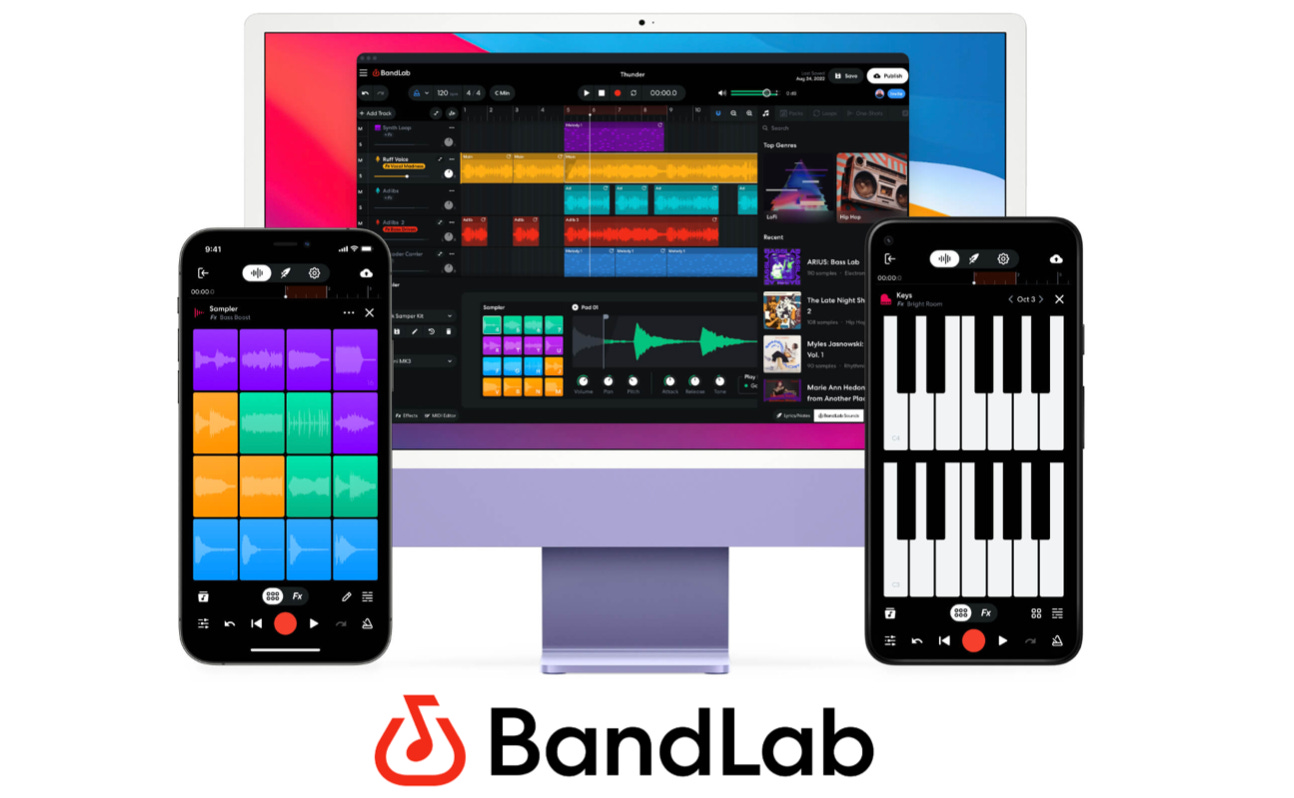
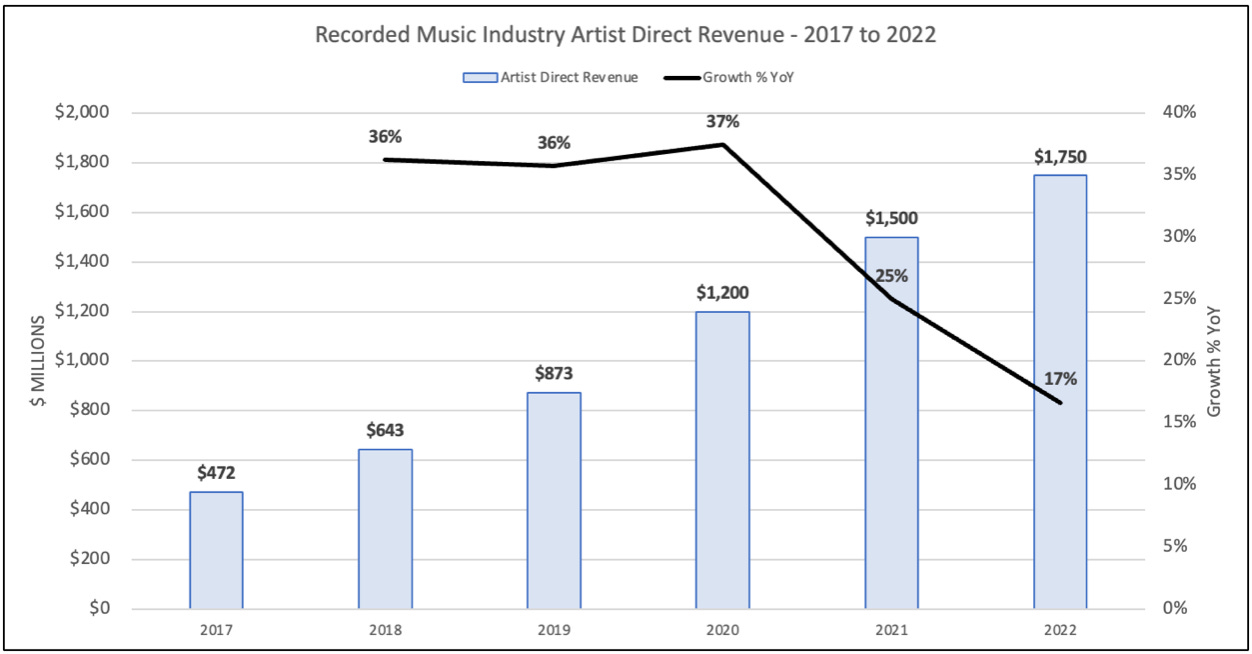
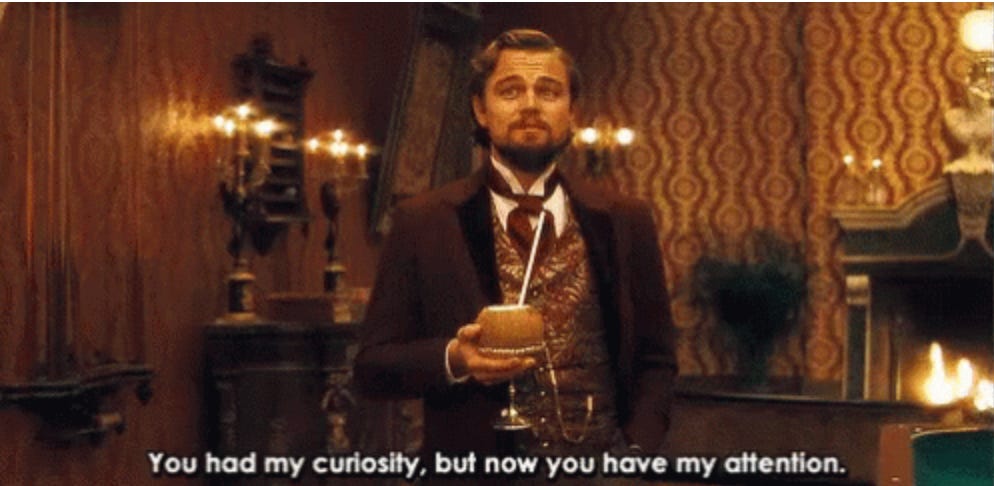
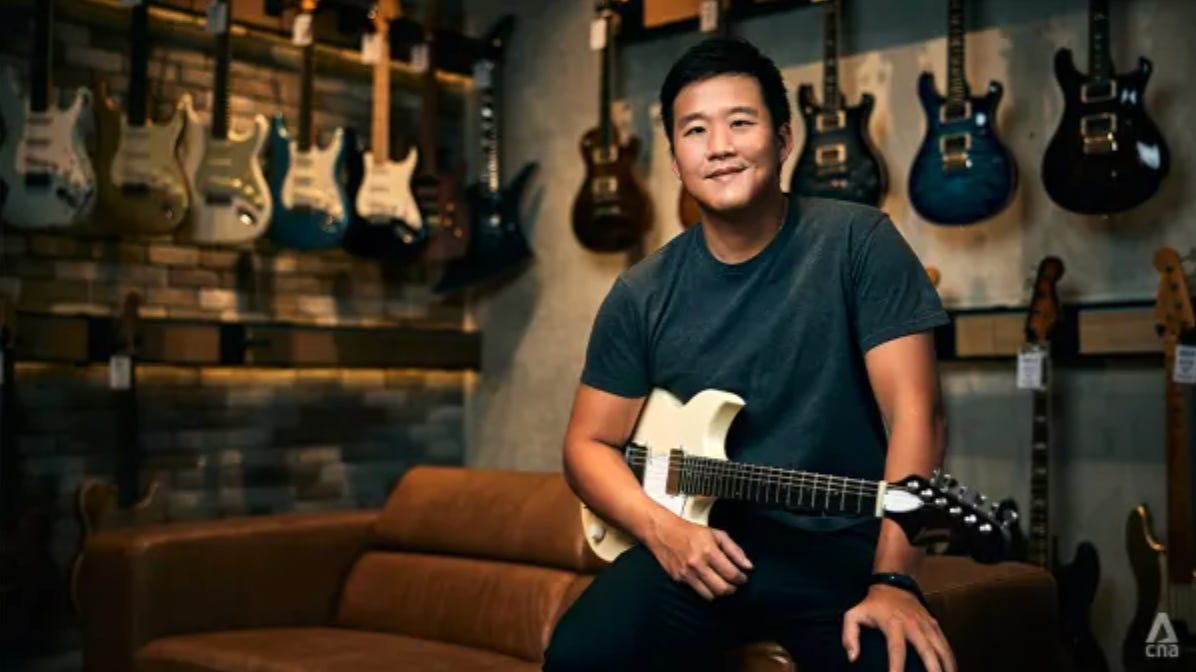
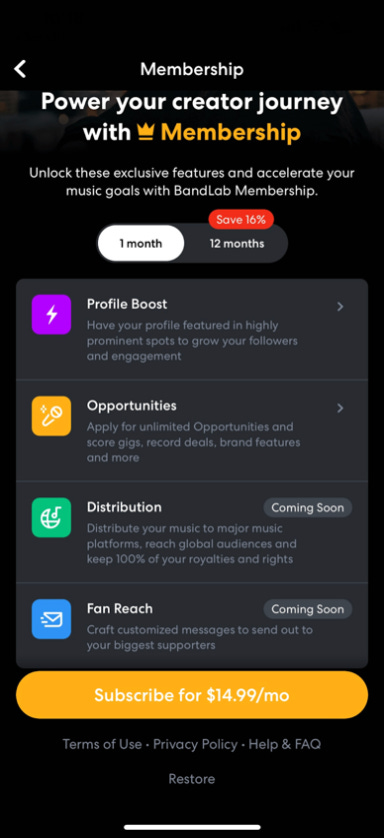

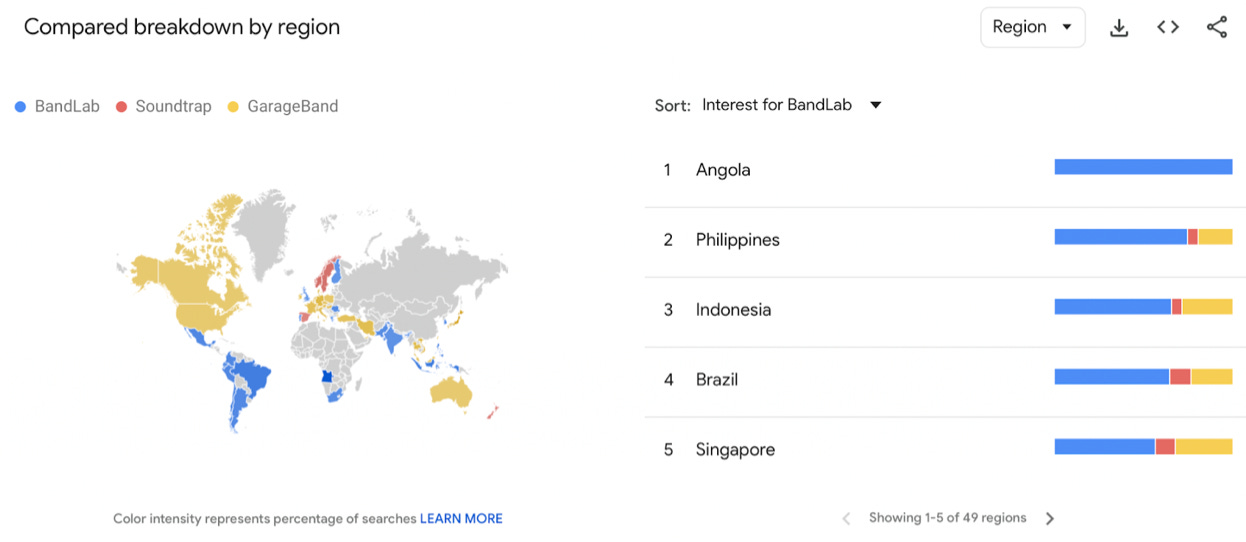
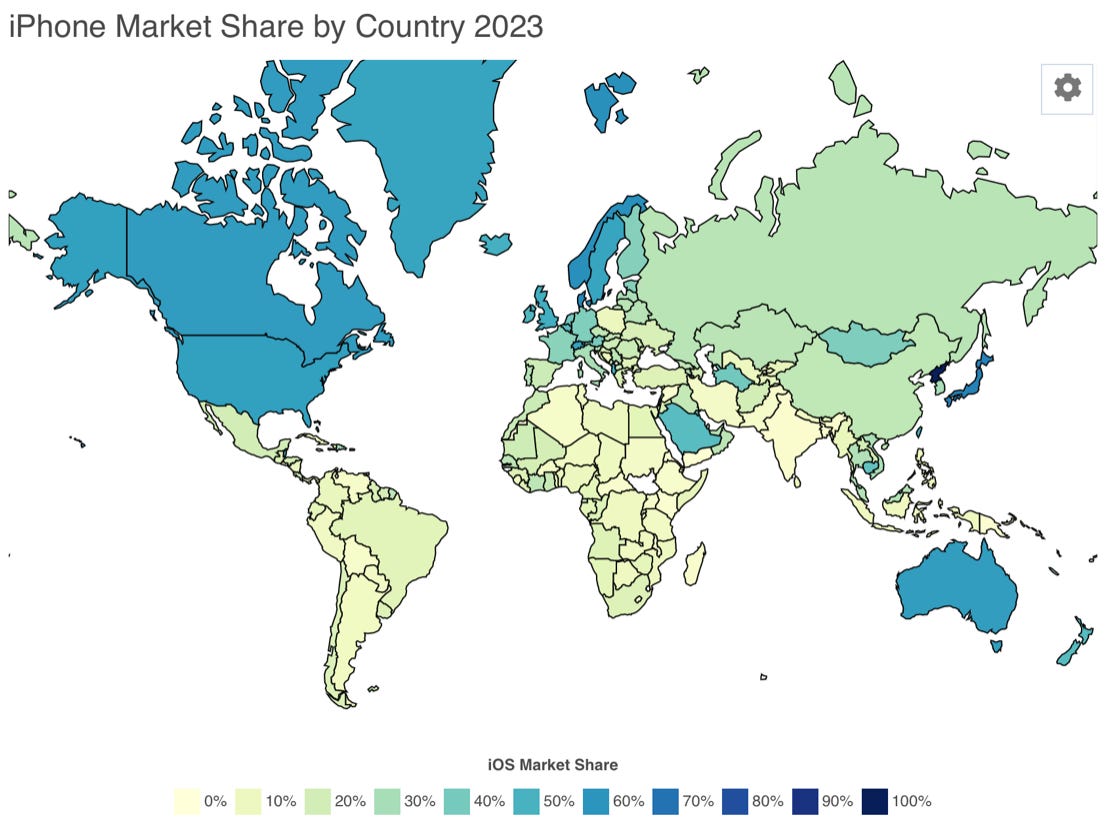
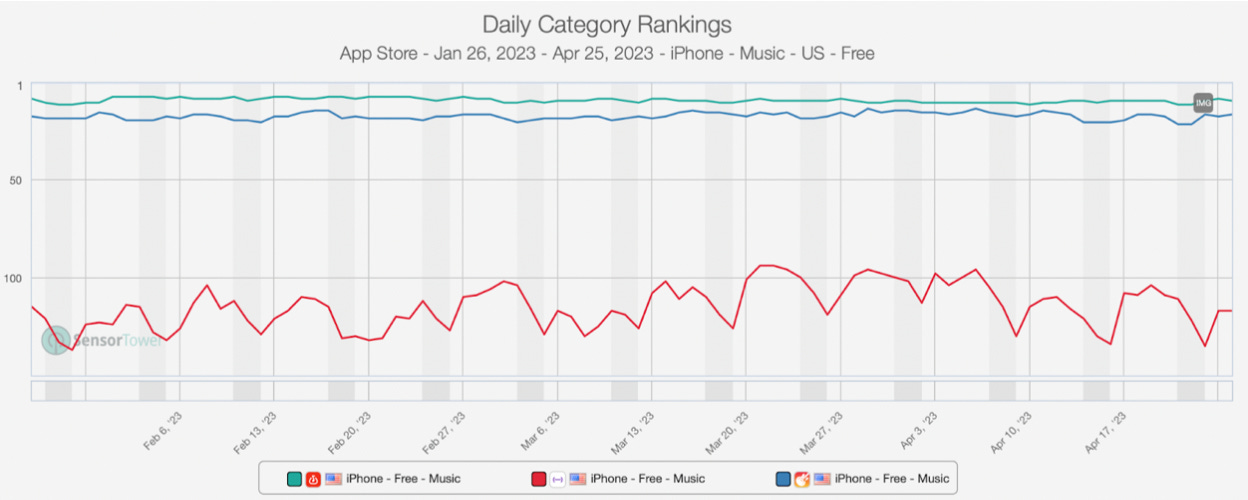
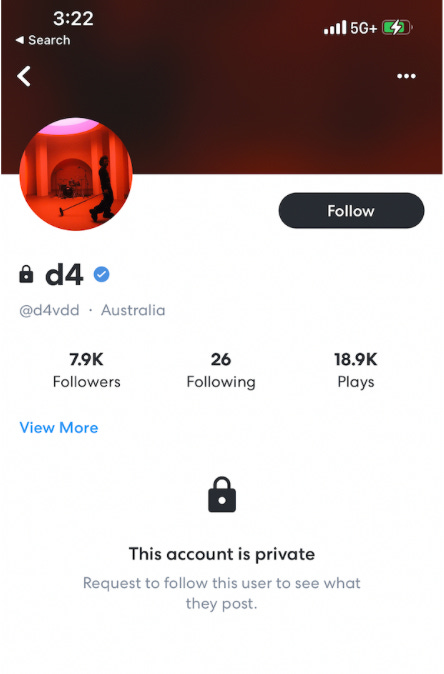
Jimmy- congratulations on another interesting article!